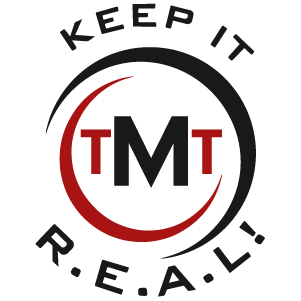Over the last month I performed a number of Marketing Piece Makeovers for clients and new Master Mind Members that reminded me just how difficult it can be for a fledgling direct marketer to”see” the flaws in a marketing campaign. I’ve been doing this for so long that my mind works like a heat seeking missile instantly spotting missing or weak headlines, absent testimonials, lack of a response device, or other similar response killers.
That is why I decided to include a checklist of things you should look for, do or test AT A MINIMUM before sending out any type of direct marketing campaign. I would suggest you not only use this for all future campaigns, but also use it to audit your CURRENT web site, yellow page ads, direct mail, and brochures.
Check #1: Does your message and offer closely match the wants and needs of the list you are sending it to? This is called message to market match and is the single most important factor determining response from a marketing campaign. An INCREDIBLE sales letter campaign to raise money for the Republican Party sent to a list of Democrats will have zero impact. Let me give you another example:
A few months ago I conducted a teleseminar on prospecting. The marketing was a success and I had well over 200 CEOs and Sales Managers of technology service companies register because I wrote the e-mail and registration page to specifically appeal to technology service companies.
I had one guy from a real estate agency lecture me by e-mail. I quote, “while the teleseminar topic and lessons look interesting, I was put off by the fact it was for technology companies”” Would he have benefited from the content? Absolutely. Would it have been worth every penny of the $197 entry fee? Without a doubt.
Is it possible that I “put off” a number of other potential customers with the marketing? I’m sure of it”but in hindsight I wouldn’t change one iota of the campaign because that same message that put him off captured the attention of hundreds of qualified prospects and customers that I DID want.
The point is this: the more closely you can match your message and your offer to the desires and wants of the prospect you are sending it to, the more successful your marketing will be.
One final note on matching your message to your market: It is far more work than blanket, “one- size-fits-all” marketing. It requires segmenting your database and creating separate offers and messages for each of the various company types and individuals on your list.
Check #2: What is your relationship with the people on the list?
Marketing campaigns sent to existing customers who know, like, and trust you will always be higher than marketing campaigns sent to a cold list. If you are mailing a cold list, be prepared to contact them (mail, phone, or e-mail) at least 3-5 times in a short period of time if you hope to get a response.
Check #3: Is there a headline? Does it:
• Flag the person you want to reach? Example: “Attention Small Business Owners In Detroit Who Are
Frustrated With Computer Consultants Who Pull A Disappearing Act Whenever You Need Them”
• Contain a juicy benefit? Example: “An Important Letter To Small Business Owners Who Know They Need To Upgrade Their Network But Are Worried About The Enormous Cost; Free Report Reveals How Small Business Owners Can Save Thousands of Dollars On Hardware, Software, Installation, and Annual IT Support Costs With A New “Thin Client” Network”
Quick Tip: To see more on creating headlines, go to Chapter 6 in the Technology Marketing Tool
Kit. There are several pages of headline examples and templates.
Check #5: Is the offer enticing enough to make the prospect stop what they are doing, put all of their fires on hold, and take time to respond? Would you respond to it? Honestly? If not, go back and improve the value of the offer.
Check #6: Is the letter easy to read? Make sure the font is consistent throughout. Too many fonts and colors make your letter look like a ransom note. You’ll also want to use
bullets and sub-headlines to break up the text and offer a double readership path. Visual people will read the headline and sub-headlines. Analytical types will read the letter from top to bottom.
Check #7: Are there testimonials or other proof included?
Check #8: Is there urgency to respond? The easiest way to create urgency is to have an offer with a deadline, or limit the number of widgets you are giving away.
Check #9: Is there a guarantee?
Check #10:Is the letter written like a one-on-one conversation? To improve your chances of getting your ad or letter read, write it as though you are having a one-on-one
conversation with a prospect. To see an example of this, look at the Hiller Plumbing yellow page ad enclosed.
Check #11: If you are mailing a letter, is there a P.S.? The P.S. is often called the
“second headline” because after the main headline, it is the second most frequently read item in any sales letter. Write your P.S. to arouse curiosity or promise a benefit that will cause the reader to go back and read the entire letter.
Check #12: Is your picture included on the marketing piece? This is not a *must* but it will improve response, even if you’re so ugly the doctor slapped your Mama. People like doing business with real people”not big, nameless, faceless organizations.
Check #13: Is there more than one way to respond, and is it clear to the reader HOW to respond? I recommend having various ways for the prospect to respond. For example, you could offer an 800 number, fax back form, and web site.
Check #14: Have you repeated the offer on the response device? Your prospect should be able to understand (and get excited about) your offer simply by reading the response device or order form. You cannot control how someone will read your letter. Most will read the response device or order form to get the “bottom line” before they will read the rest of your offer.


